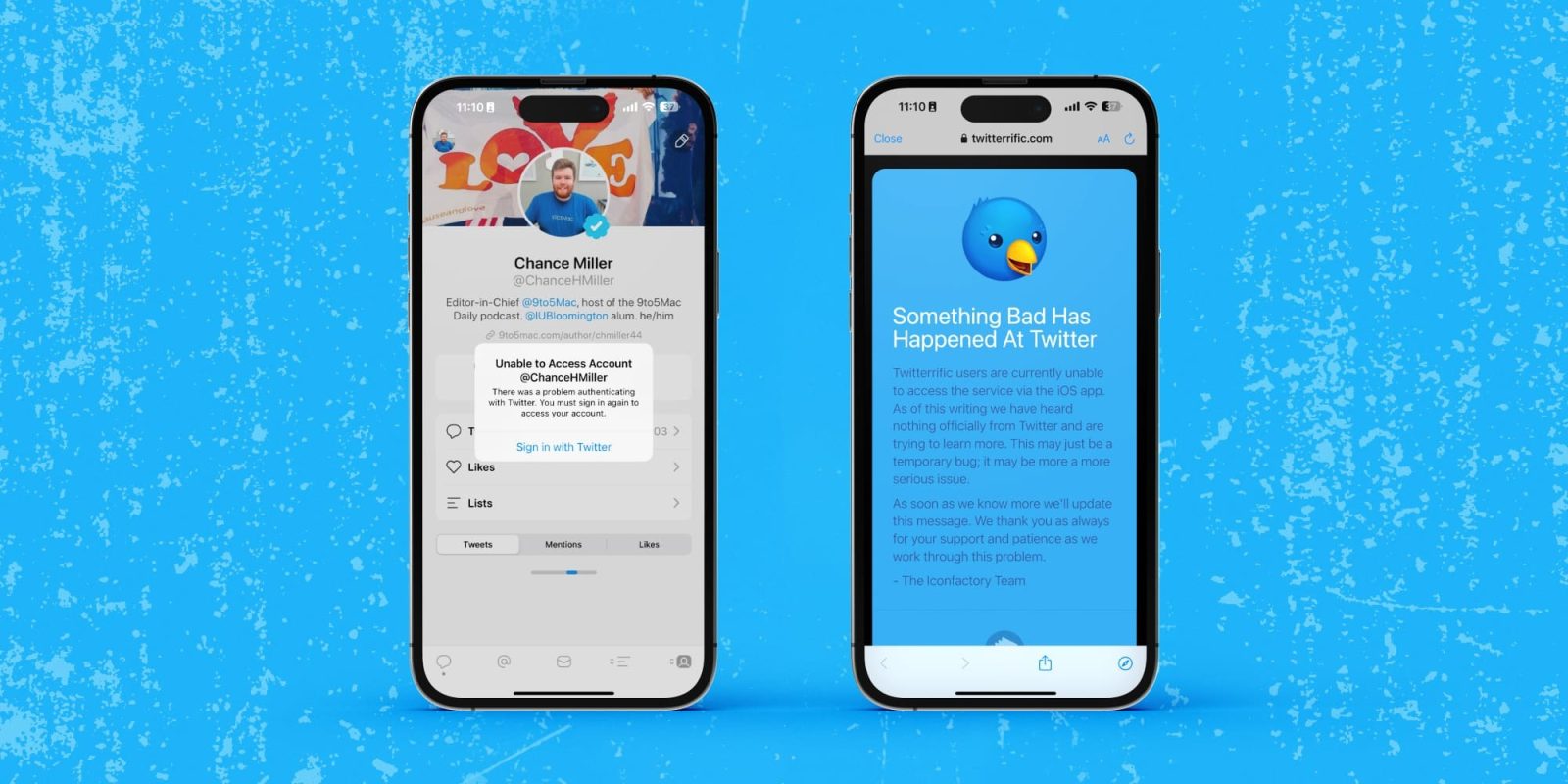
Back in January, Twitter made the decision to kill off third-party clients as part of changes to its API. In light of those changes, Texas Monthly this week published a new in-depth profile on Tapbots, the Texas-based company behind Tweetbot and now Ivory for Mastodon.
In the profile, Twitter’s former head of product for the developer platform, Amir Shevat, revealed a statistic that further highlights the potential short-sightedness of Twitter’s decision to cut off third-party apps like Tweetbot and Twitterrific…
According to Shevat, third-party apps like Tweetbot and Twitterrific historically accounted for a whopping 17% of all engagement on Twitter. Through his role, before Musk acquired the company, Shevat was tasked with making sure developers like Tapbots and The Iconfactory had the Twitter tools necessary to continue making their third-party clients.
Amir Shevat, Twitter’s former head of product for the developer platform, who lives in Round Rock, was responsible for ensuring that the tools Twitter provided independent software developers using the platform met their needs. He said about 17 percent of engagement on Twitter, historically, was through third-party apps, which played a vital role in defining Twitter’s identity.
The story includes a number of comments from Tapbots cofounders Paul Haddad and Mark Jardine on how Twitter’s changes impacted their company, personal lives, and more.
Since Tweetbot was shut down, Tapbots has pivoted to focusing on Mastodon. It quickly released an early version of its excellent Ivory for Mastodon client for iPhone and iPad. Just this week, it expanded Ivory to the Mac as well.
The decision arrived without explanation, threatening the livelihoods of small, independent developers such as Haddad and Jardine overnight and marking an end of a DIY tech ecosystem outside of Silicon Valley. “There was definitely a lot of anxiety,” Haddad recounted recently. “Eventually, it kind of felt like a relief. We can get off the merry-go-round of what crazy thing Musk is going to do today.”
Jardine said he has received positive feedback on the initial launch of Ivory, which he admits was released without all the features he wanted to include. Users being excited about his work is uplifting, he said. But that’s not what entirely motivates him. “Without [Ivory], we have no business,” Jardine said. “There’s a lot of pressure riding on it.”
Craig Hockenberry of The Iconfactory, the company behind Twitterrific, added:
“It’s just a chickenshit maneuver on [Twitter’s] part. The thing that bothers me the most is just the lack of respect that they showed us and basically everybody else in the developer ecosystem.”
The entire profile is well-worth a read and is available on the Texas Monthly website.
9to5Mac’s Take
The fact that third-party apps such as Tweetbot accounted for close to 20% of all engagement on Twitter just highlights how incredibly shortsighted it was for Elon Musk to cut those apps off.
People who used apps like Tweetbot and Twitterrific were also almost always power users, as John Gruber points out on Daring Fireball. Those users generated an outsized amount of content for Twitter users. Content that people using Twitter’s official app could then consume and engage with – with ads.
I don’t think anyone is necessarily arguing that Twitter should have continued allowing its API to be used by Tweetbot and Twitterrific for free. But clearly, the situation could have been handled better and an actual solution could have been implemented. Instead, Twitter cut the apps off with no prior warning.
One day, Twitter may very well decide to reverse its course and allow third-party apps again. But at this point, chances are that most developers won’t take Twitter up on that offer. They’ve already been burned by Musk once and services like Mastodon and Bluesky are already gaining surprising momentum.
Add 9to5Mac to your Google News feed.
FTC: We use income earning auto affiliate links. More.






